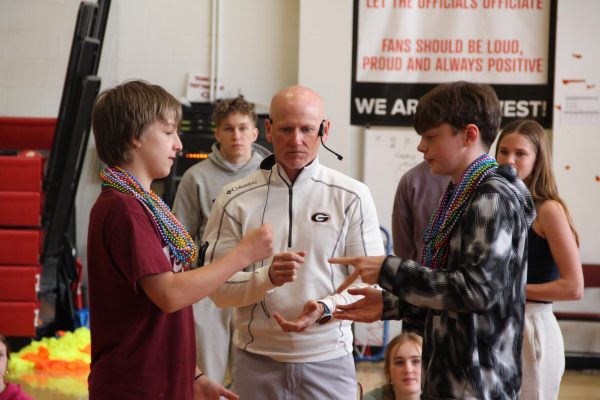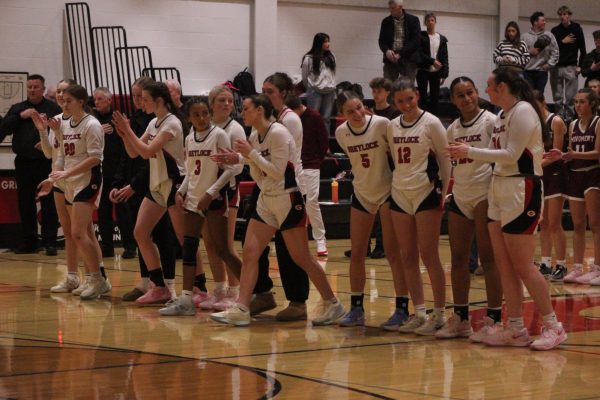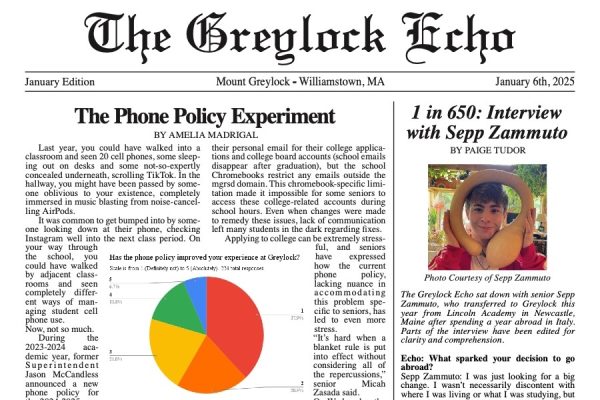The Future of Directed Study
As this school year begins to come to an end, students are beginning to look to the next. With it will come not only a new building but also a new schedule.
The schedule will look in many ways similar to this year’s, but will have several distinct differences. It should be noted that while this is, as of now, the planned schedule, it is not yet set in stone. According to Principal Mary MacDonald, the full rotating block schedule will be kept in place, and classes will remain 44 minutes long. That being said, instead of the two-lunch schedule that is currently in place, there will be three lunches next year. This partly influenced the decision to remove directed study from the schedule. Its place will be taken by an “extended learning period,” and a longer break. The extended learning period will be added on at the end of the third block every day. Because of the full rotating schedule, over the course of the week every class will have the extended learning period added on once.
According to MacDonald, a lot of the rationale behind removing directed study was because of the new building: “the driving force to not having directed study next year initially was because we had to manage three lunches, and having directed study was a nice way to balance two lunches, but given the reduced size of the cafeteria and the increased size of the student body we can’t manage just two lunches.” Because of the smaller size of the new cafeteria, the tentative arrangement for next year is to have three lunches; one for seventh and eighth grade, one for ninth and tenth, and one for eleventh and twelfth. However, many students have classes with other students in different grades. As stated by MacDonald, “the second and third lunch would be for 9 and 10 and 11 and 12. That may not happen because we have so many mixed classes. So we’ll have we have to figure out how that can work.”
Along with the increased size of the student body and decreased size of the new cafeteria, MacDonald also cites the fact that, in many cases, directed study is not being used for its intended purpose, “I will also say that directed study has to be used for academic purposes. And what we’ve observed across the board is that it’s become a time for Netflix and talking and texting.” MacDonald points out that she isn’t the only one who’s seeing this. If the state came in they also wouldn’t see this as time being used for education. Said MacDonald, “the state wants to see directed study as time on learning. And I made a pitch for that, actually I made multiple pitches for it five years ago when I became a principal… but kids aren’t using that time to work with their teachers. There is a lot of Netflix going on. And if a state came in they too would see that it’s not time on learning.”
MacDonald also notes the many advantages of an extended learning period over directed study. She explains the flexibility it would give teachers: “this extended learning time is specifically attached to the class that precedes it and that could mean – teachers will have a whole bag of tricks with regard to how to use it. It might be an opportunity for them to have one on one conferences with students. It might be a time when they have lab work…there will be lots of opportunities.” The extended learning period may be used to limit the homework in that class, not in a dissimilar way from what directed study did. In an English class, for example, “you’re doing some [reading] in class, you’re having discussions, and then you need to keep reading, and often you’re reading at home. Maybe there’s an opportunity to do reading and some discussion questions in that class… something you can get done instead of [other] homework,” MacDonald explains.
With this in mind, it would, in theory, be possible for teachers to let students do homework during the extra class time, turning it into a de-facto directed study. In a similar manner, MacDonald points out what the extended break could allow students to do, claiming that it could be “time to get a copy of something, that’s time to drop off something with a teacher, that’s time to pick up something from a teacher.” With the planned new schedule, there is an obvious emphasis on attempting to make up for what is being lost in directed study.
Although not yet set in stone, the planned new schedule will go into effect next year. Although it’s veering away from the tried and true method of today, it may also be the future of education. Directed study has undoubtedly done great things for Mt. Greylock, and a schedule without it truly is a step into the unknown. As English teacher Mr. Fisher said, “I don’t know what high school is like without having a chance to take a break.”
Author’s note: the quotations used in this article were taken from an interview conducted during directed study.







